conservation: rebinding with original covers
-
conservation: rebinding with original covers
An example from the Historical Society of Pennsylvania's Bank of North America collection. When the book was removed from the stacks, the textblock sewing had broken, and the spine leather was completely disentegrating.
book date: 1799 - 1800 measurements: 10 x 15 x 1.3"
 view of the front cover
view of the front cover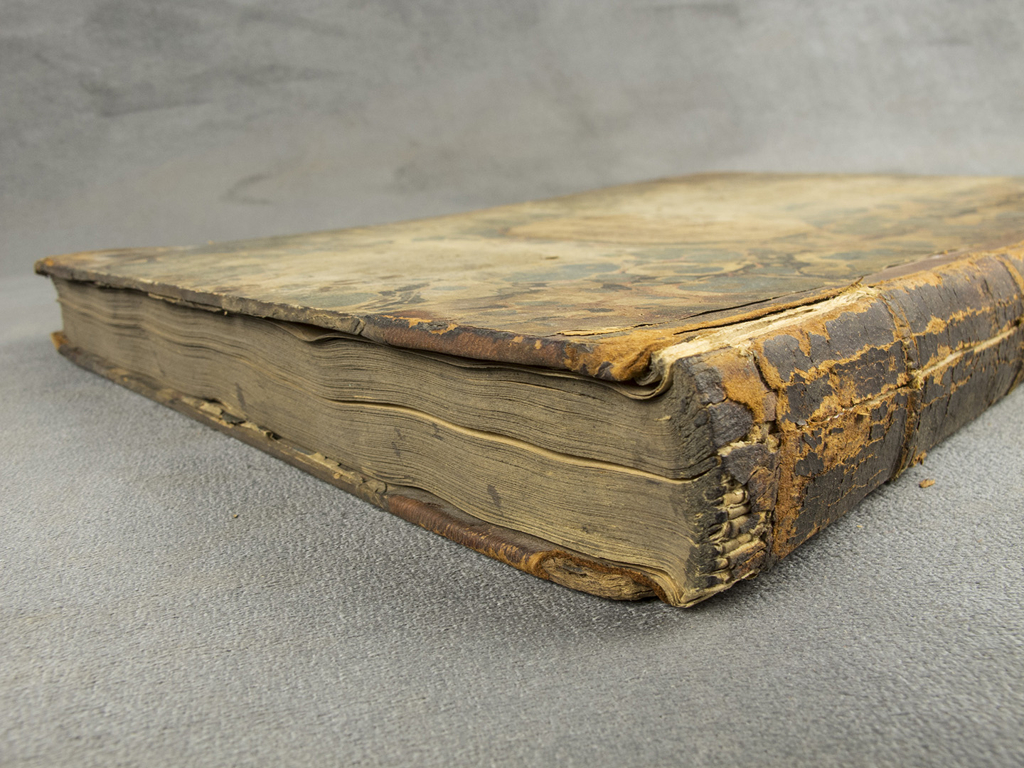 view of the spine at the head of the book
view of the spine at the head of the book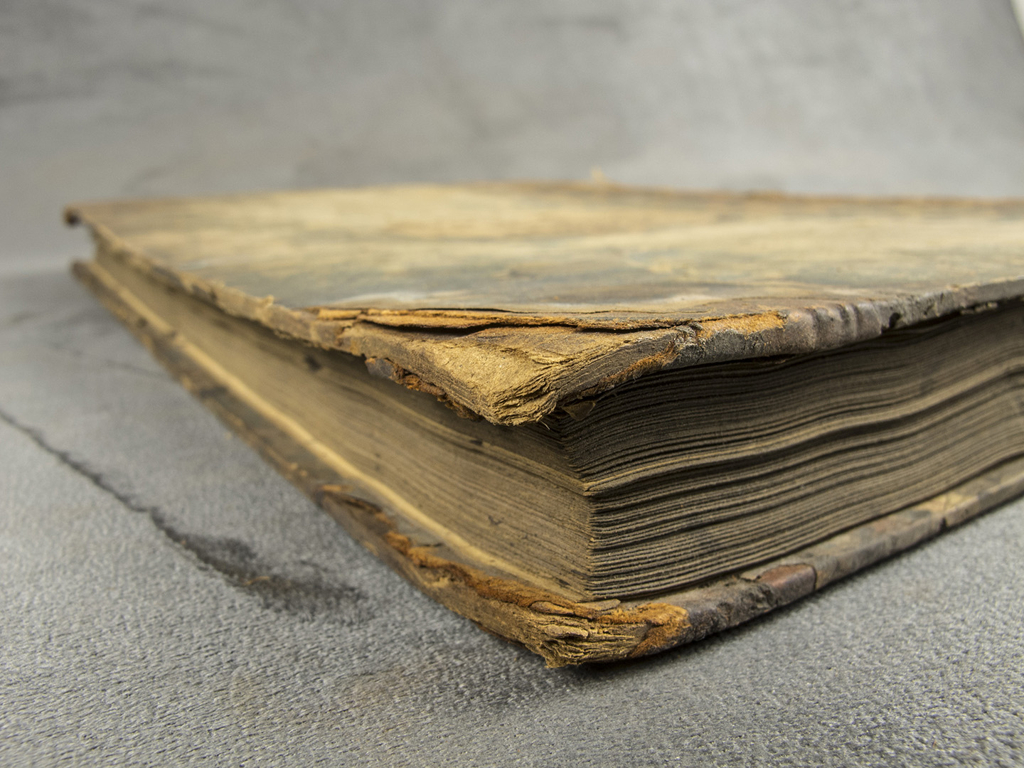 view of the foredge at the head of the book
view of the foredge at the head of the book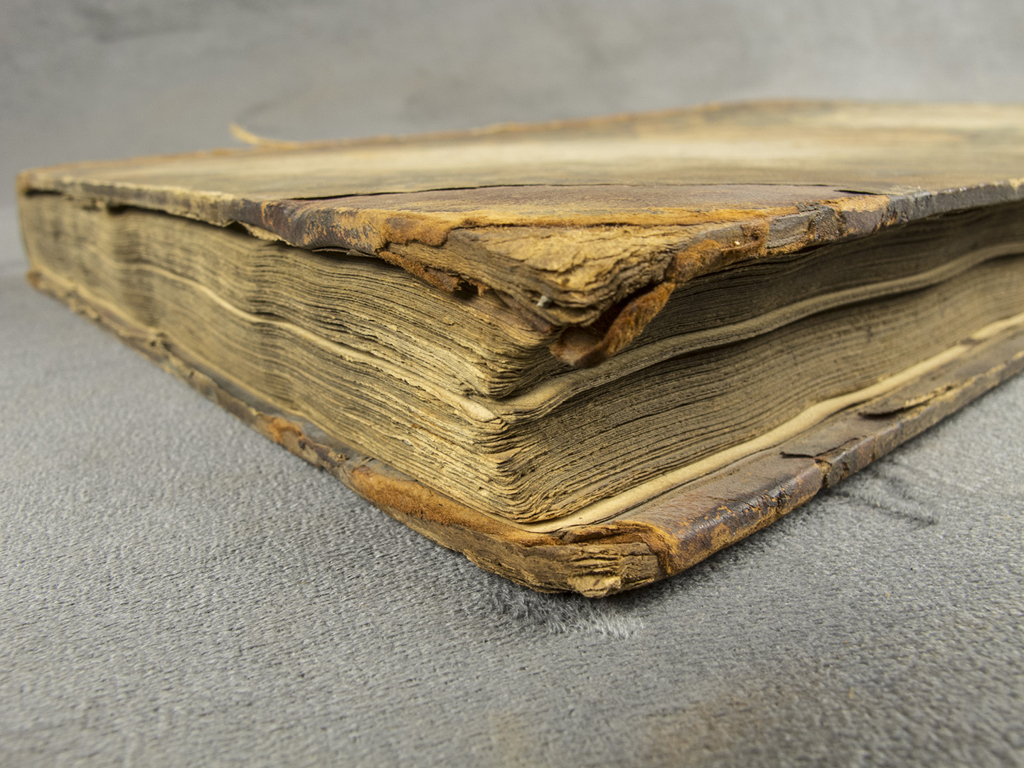 view of the foredge at the tail of the book
view of the foredge at the tail of the book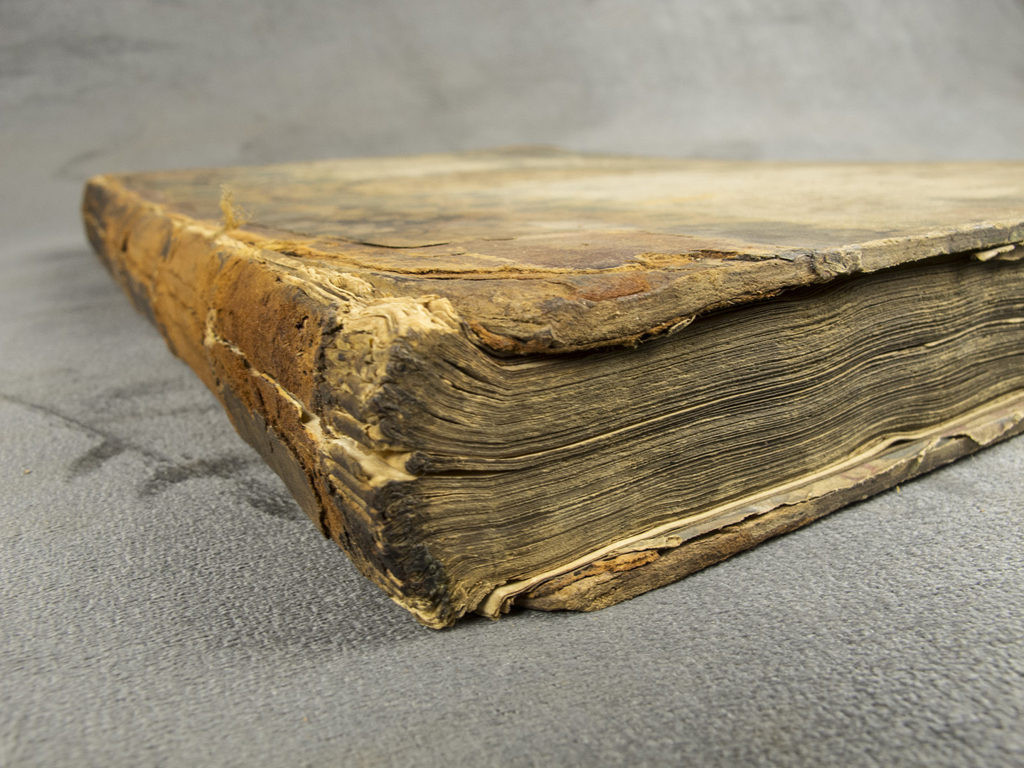 view of the broken spine at the tail of the book
view of the broken spine at the tail of the book detail of the broken text block, from the center of the book
detail of the broken text block, from the center of the bookI used a wheat paste poultice sparingly to help remove the hide glue on the spine. After assessing and dry-cleaning the textblock, the folios were guarded with Japanese tissue and wheat paste to allow enough strength for the textblock to be resewn.
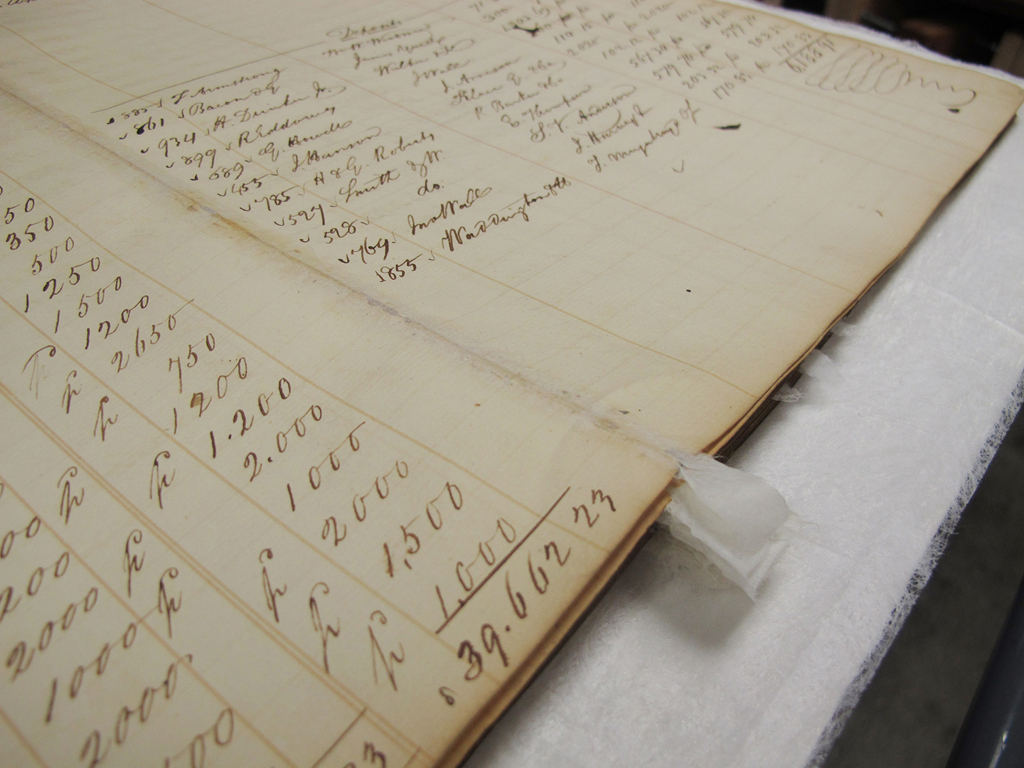 detail of a stack of guarded and mended folios
detail of a stack of guarded and mended foliosAfter guarding, the signatures were collated, new front and back signatures of Ingres paper were added, and airplane cotton hinges were tabbed onto the new Ingres signatures. The signatures were resewn onto linen tapes with linen thread.
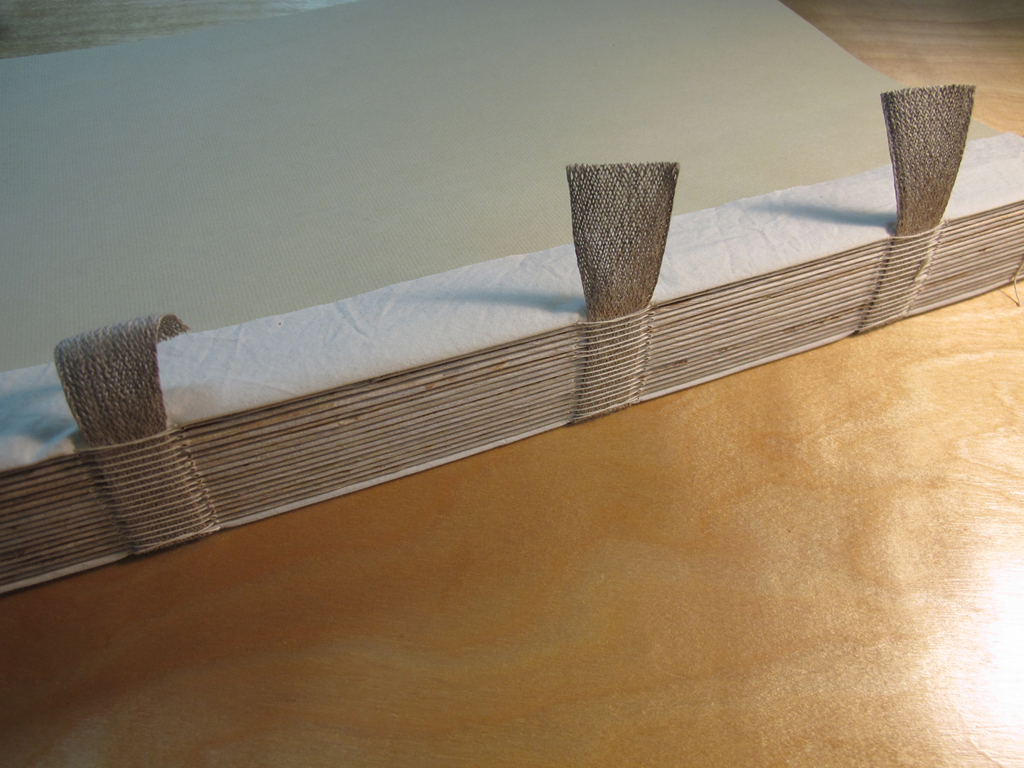 the text block after guarding and resewing, with airplane cotton hinges
the text block after guarding and resewing, with airplane cotton hingesThe textblock was then placed in the jobbacker for rounding, backing, and the application of spine linings. Airplane cotton hinges were applied and a new hollow was made out of Bugra paper.
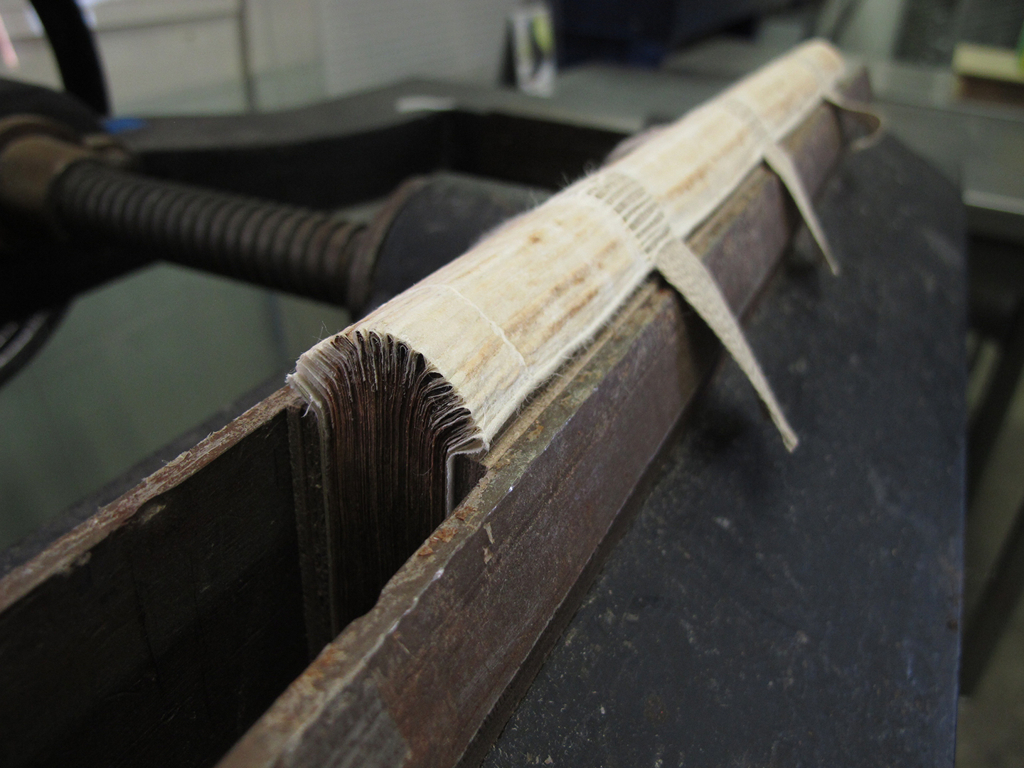 view of the book after rounding and backing, awaiting spine linings
view of the book after rounding and backing, awaiting spine linings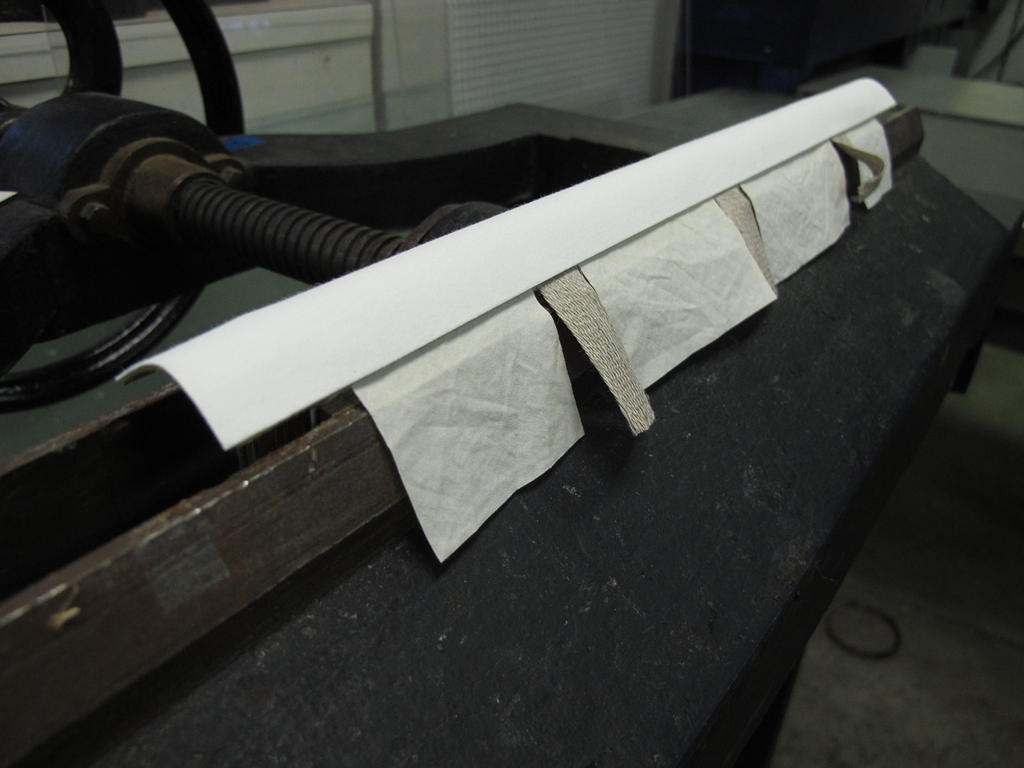 view of the spine with airplane cotton hinges, hollow, and spine linings
view of the spine with airplane cotton hinges, hollow, and spine liningsThe text block was attached to the original covers with the linen tapes and airplane cotton hinges. Afterwards, the spine was covered with iris bookcloth, and the rebinding was complete.
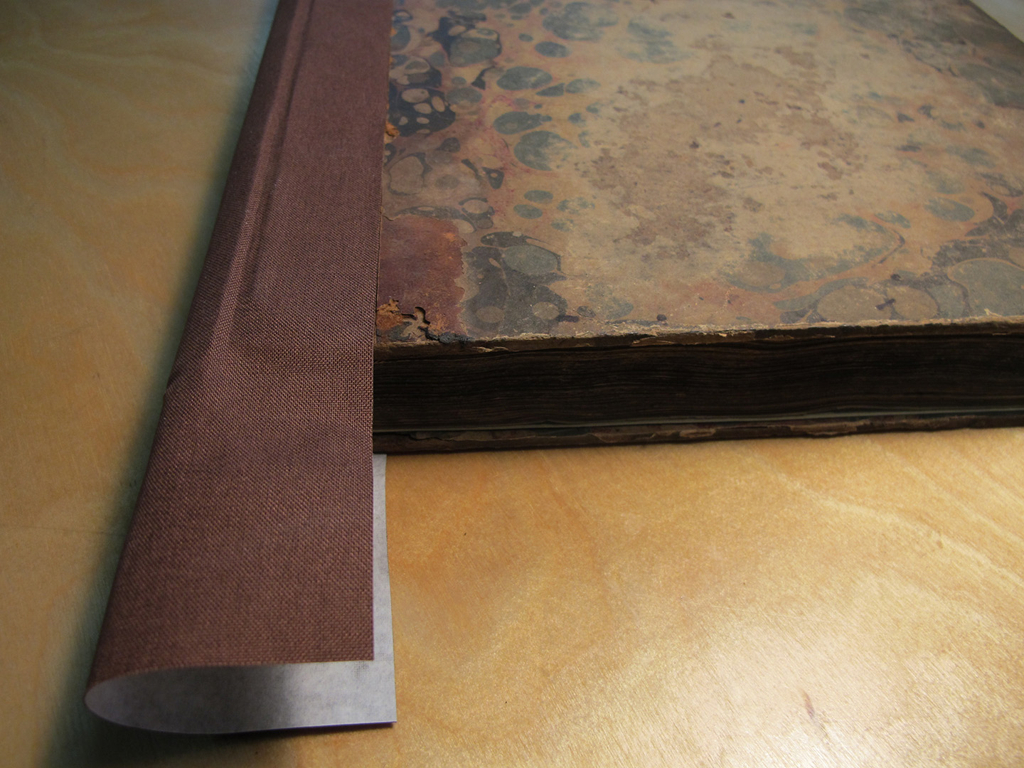 detail of the bookcloth attached to the new spine
detail of the bookcloth attached to the new spine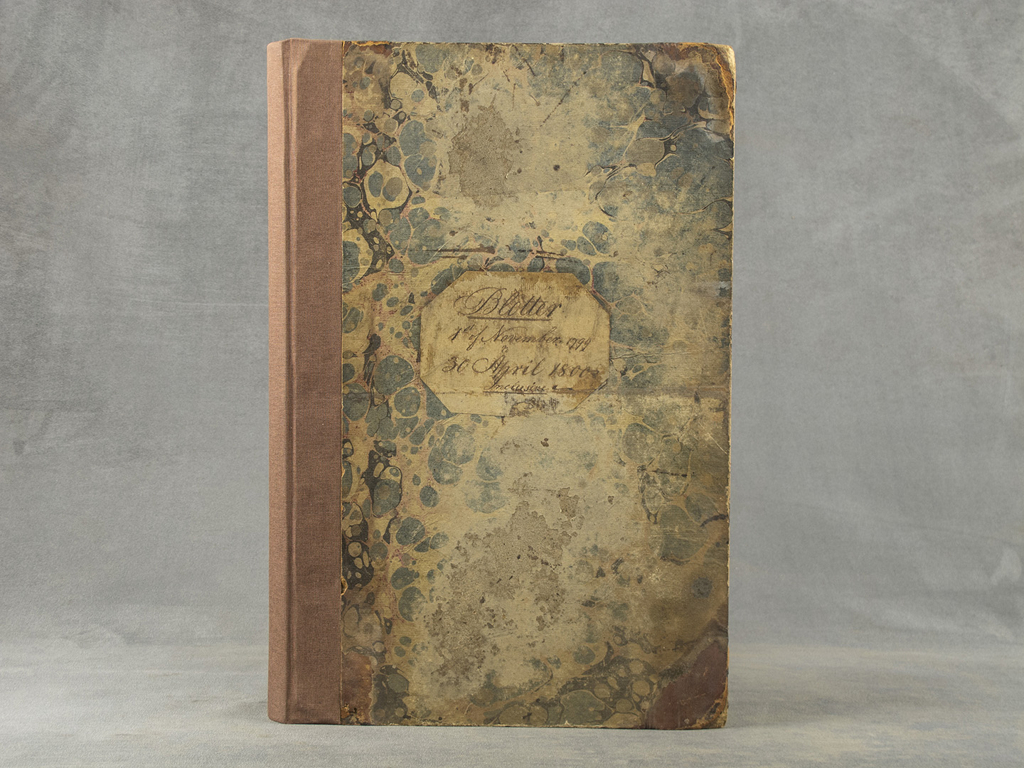 view of the completed conservation binding, with the original front cover
view of the completed conservation binding, with the original front cover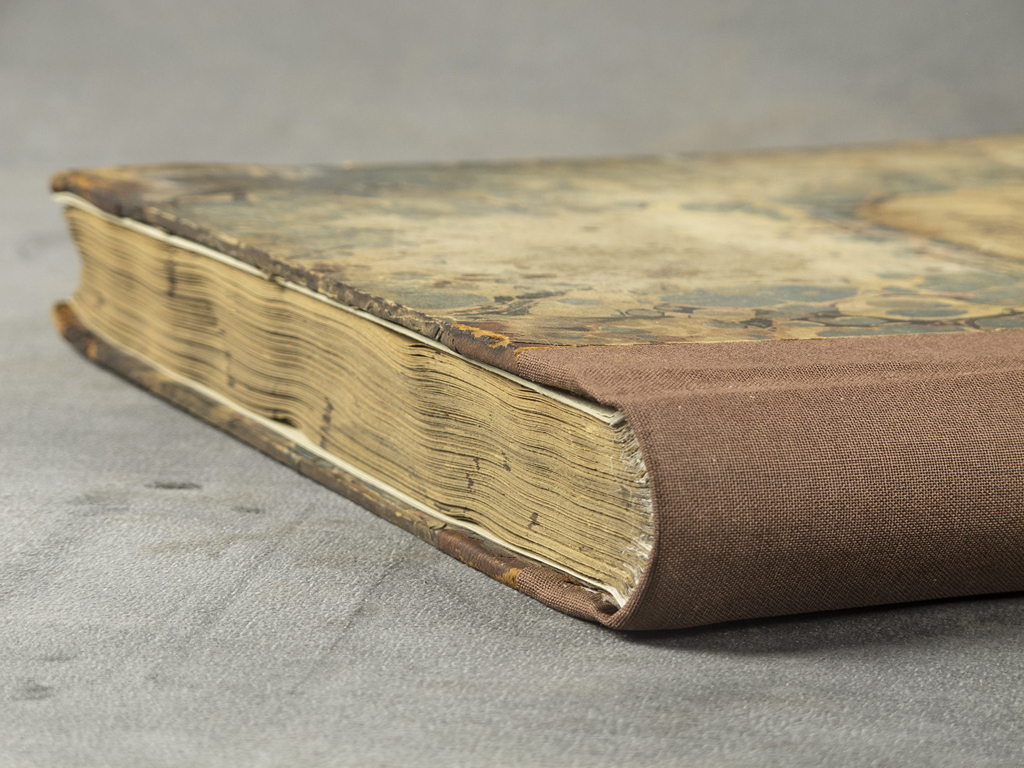 view of the spine at the head of the book
view of the spine at the head of the book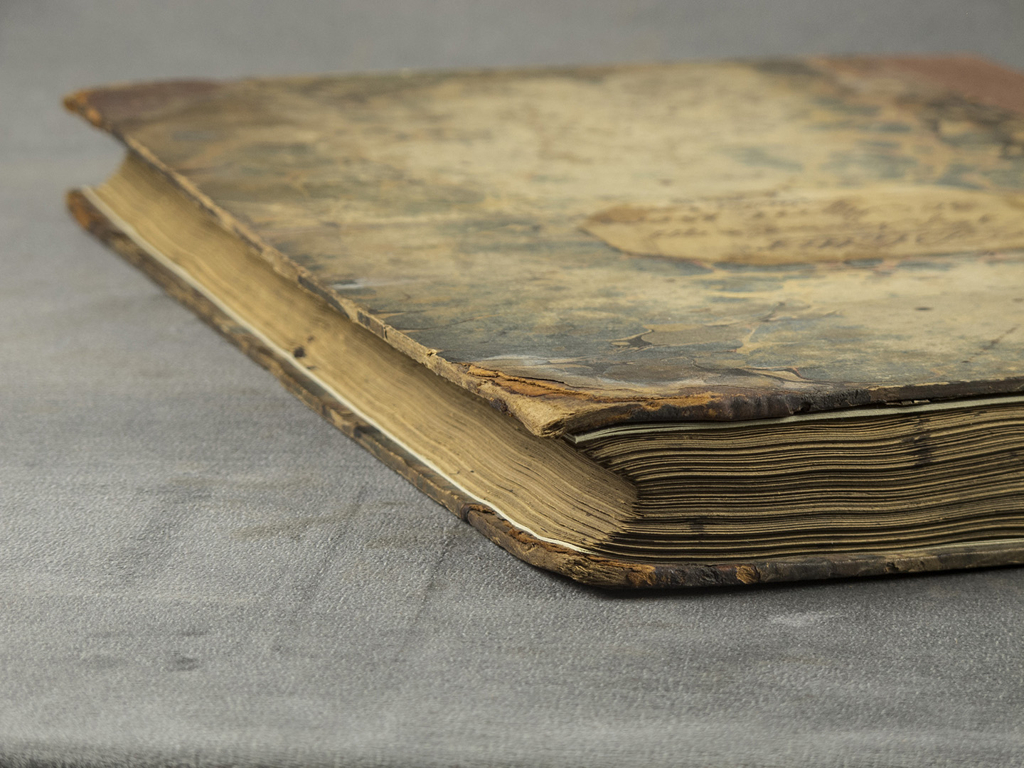 view of the foredge at the head of the book
view of the foredge at the head of the book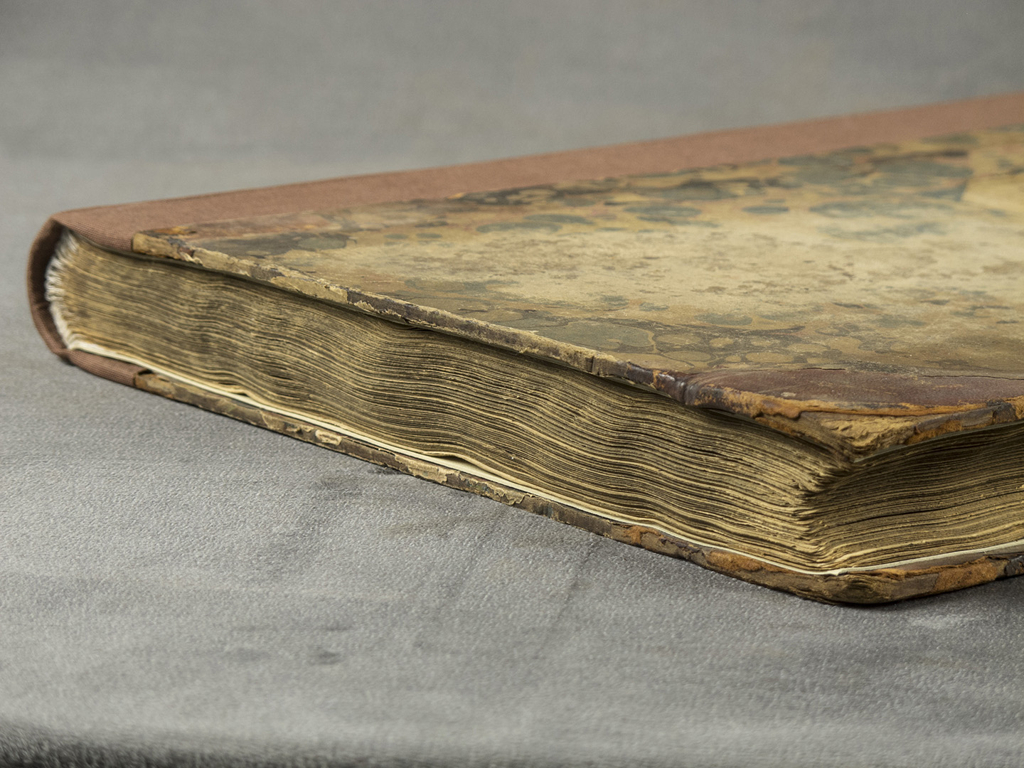 view of the foredge at the tail of the book
view of the foredge at the tail of the book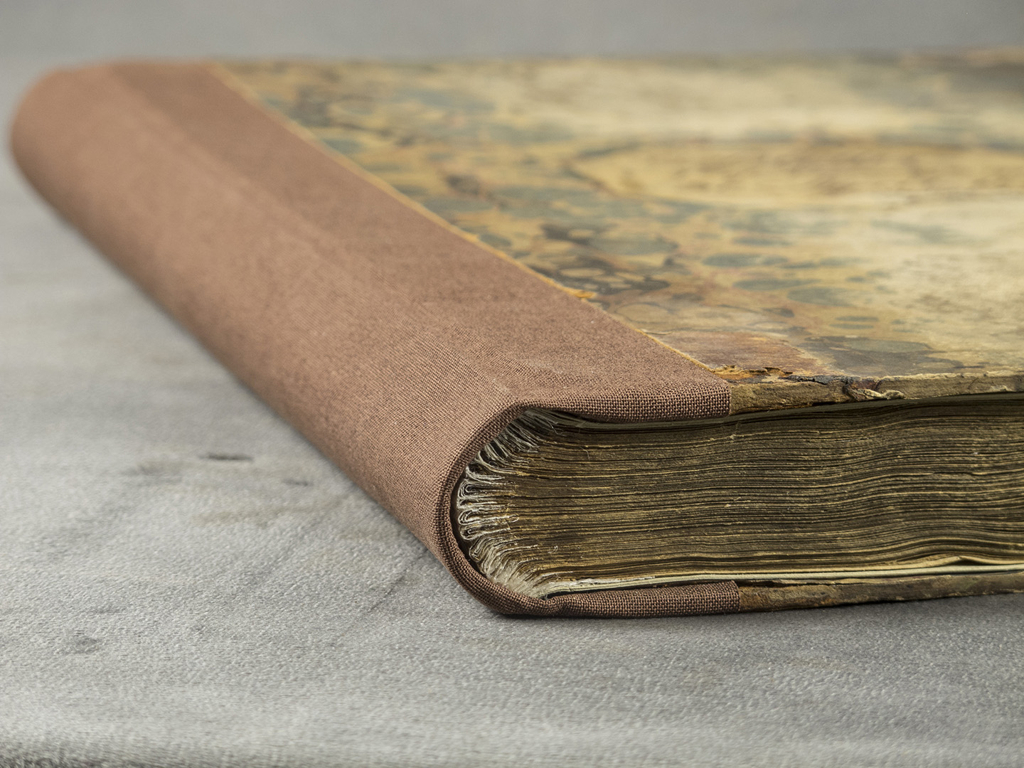 view of the spine at the tail of the book
view of the spine at the tail of the book